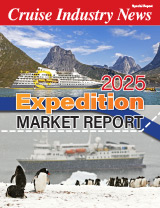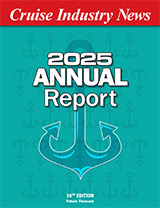 Itinerary planning requires a combination of talent, including knowledge of revenue management, logistics and geography at the very least.
Itinerary planning requires a combination of talent, including knowledge of revenue management, logistics and geography at the very least.
An itinerary must be attractive enough so that people want to go there and pay for it – and simply put, the more they are willing to pay, the more successful that itinerary will be.
The logistics part ensures that an itinerary fits within a defined cruise length, for instance, seven days, from a given port; that there is airlift; destination infrastructure to handle the ship, the crew and the passengers.
And geography is important as the industry explores new itineraries and new parts of the world.
Itinerary planning is an ongoing process where the parameters keep changing – impacted by market preferences (where passengers want to go), congestion, fuel prices, port costs and taxes, world events and more.
Market forces have contributed to the growth of the cruise industry in Europe, particularly in the Mediterranean, but also in South America, the Middle East, the Indian Ocean, Down Under and the Far East. In this issue, we have talked to itinerary planners at the leading cruise lines who explain some of the reasoning going into ship deployments and new programs.
The Caribbean is the single largest sailing region in the world, “the heart and soul of the industry,” despite the focus on Europe and more exotic destinations. And the Caribbean island nations are working to maintain their share of the business.
The trend driving more growth elsewhere can be attributed partially to experienced cruisers, who have been to the Caribbean and now want to go somewhere else, and to growing foreign markets, whether in Europe, South America or Down Under, with passengers who prefer to cruise closer to home.
It is up to the cruise lines and the Caribbean to attract more new passengers and to convince experienced cruisers to return whether with new ships or new shoreside experiences.
The luxury and expedition lines, meanwhile, tend to sail different seas. To have bragging rights or offer authentic experiences, the luxury lines go to “famous” places, and the adventure and expedition ships tend to go to more remote locations or offer unique experiences in popular ports. The chief executives of the leading companies have shared their thinking with us, and we hope you will find their comments as interesting as we did.
The good news is that every market segment is in a growth mode, which bodes well for ports, tour operators and other companies servicing the industry worldwide. But that does not mean that the business will simply come. It is not automatic. Cruise ships will sail where passengers want to go and to destinations that can be reached without excessive costs and also help drive shore excursion revenues.
Therein lies the challenge for ports and destinations, and opportunities for cruise lines, to work together to develop their products. The objective is the same: a happy passenger who will want to cruise again.
Publishers



